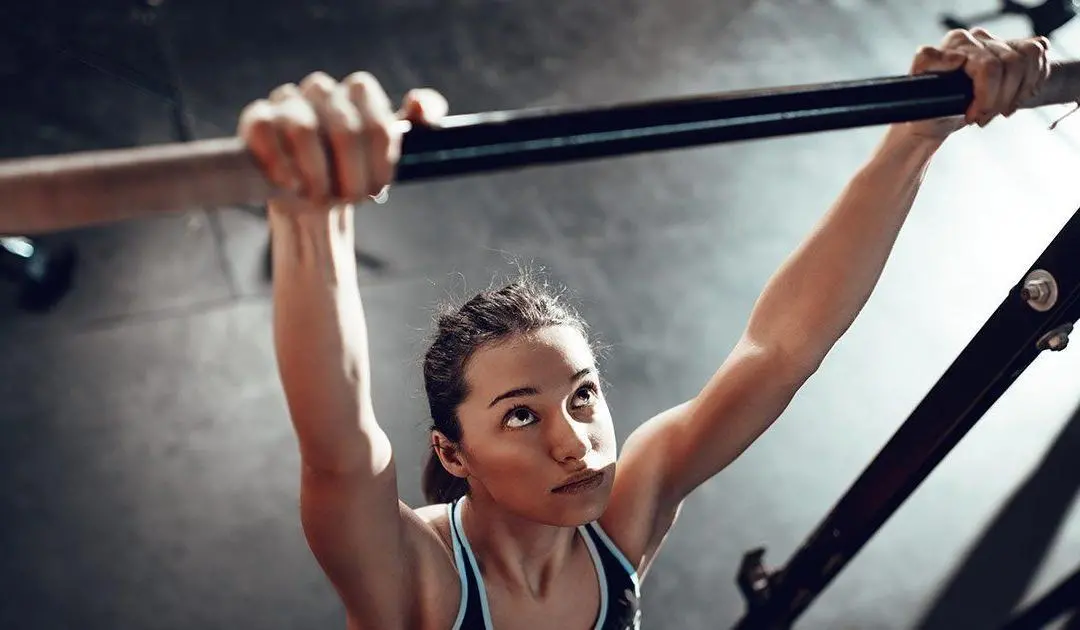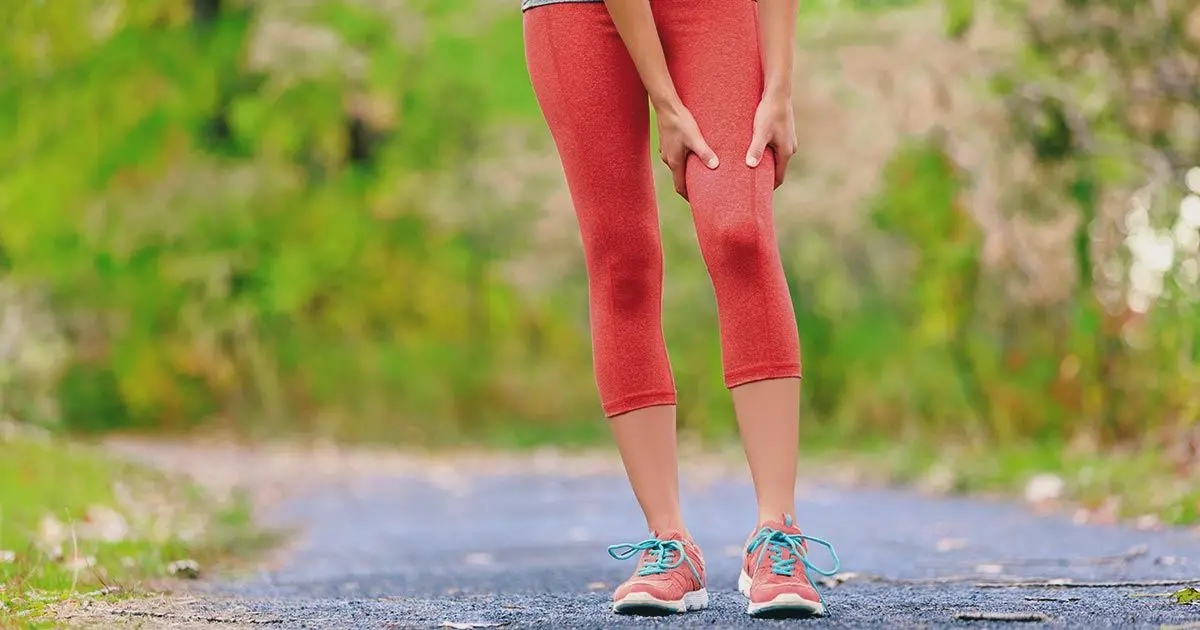So you’re looking for the best lats workout?
Your latissimus dorsi, or lats muscle, are proportionally large muscles. They serve several functions we’ll review below.
But what most people working out is concerned with is the very attractive V taper they create on one’s back. Simply put, this V taper is because the latissimus dorsi muscle is triangular in shape. Very prominent on a bodybuilder back.
Glynn’s Guide:
- I’ve seen the biggest gains using heavier weight for lat exercises.
- Overworking your lats will result in rounded or protracted shoulders.
- Hand position (palms up or down) makes a difference, but distance from center has minimal impact on lat involvement in latissimus dorsi exercises.
- The 10 lats exercises listed are more than enough to build a great set of lats.
As far as I’m concerned, the V taper is a great look for both men and women. Not only will we discuss the lats anatomy, function, and physiology below, but we’ll discuss some of the best latissimus dorsi exercises to strengthen and grow your lats.
Onward to a stronger more attractive back…
What do we use lats for?
First of all, the lats are one of the most important muscles which pull your humerus (upper arm bone) down toward your rib cage. So if you’re doing a chin-up, or pulling down on a rope, you’re using your lats (a lot).
They also play a substantial role in stabilizing your shoulder.
Anatomy of the lats (if you care).
We mentioned your lats are the V-shaped muscles that begin at the top of your armpits and go all the way down to your pelvis. They’re actually very large regardless of whether you do lat exercises or not.
The lats originateoriginate means the least movable part that attaches closest to the center of the body all the way down to the top of your pelvis (bet you didn’t expect that), the lower part of your vertebrae and last three ribs.
If you want to get technical, they originate at the posterior crest of the ilium (pelvis), the back of the sacrum (pelvis), the spinous processes of the lumbar and lower six thoracic vertebrae. They also originate at the lower three ribs.
The lats insertinsertion means the most movable part that attaches the furthest from the center of the body midway down the humerus (upper arm bone).
Again, if you want to get technical, the lats insert at the medial side of the intertubercular groove of the humerus.
A lesson in kinesiology of the lats – the mechanics
The lats are one of three prime movers of the shoulder. The pectoralis major and the deltoids are the other two big movers. Since the lats originate posterior (behind) the shoulder joint, they extend the arm. Let’s simplify that…
Raise your arms from your side out in front of you and over your head. This is flexion. The act of lowering your arms from above your head and down in front of you to your sides is an extension. The lats are a major player in the extension of the movement (lowering your arms).
In fact, your chest muscles (pectoralis major) and deltoids are the antagonists of the lats. That is, they do the opposite movements.
We can break this down by addressing how the lats move the shoulder joints. This is grossly simplified so that it’s beneficial in your quest to improve your lats.
- The lats adductmovement of the arm toward the center of the body If your arm is raised to your side, the act of lowering it toward your waist is adduction. I like to think of adduction as the opposite of abduction. If someone has been abducted, they’ve been taken away. So, abduction is away from the center of the body and adduction is toward the center of the body. Got it?
- The lats extendincreases the angle of the joint by moving bones apart the shoulder joint. Again if you lower your arms from overhead to down in front of you, this is extension.
- The lats internally rotateinward rotation of the upper arm the shoulder joint. With your arms at your side, twist your palm so it faces behind you. That’s internal rotation. If you try to externally rotate it, you can’t get your palm to face behind you.
Innervation (turning the lats on)
The lats are innervated by the thoracodorsal nerve. It leaves the cervical vertebrae at C6, C7, and C8. Enough said.
Can you change the shape of your lats?
This is a question I heard a lot before the internet was so pervasive. Hoping that a good lats workout can change the shape.
Simply put, you can not change the shape of a muscle, but you can change its size.
Of course, since you can change the proportions of the lats to other muscles, you can give the appearance of a different shape. That said, I recommend keeping all muscle groups proportionally. Otherwise, you run into postural problems.
Dangers of overworking the lat
Because of the location, the lats muscles insert (attach) on the humerus, they act to internally rotate the shoulder. When this is in excess, it rolls the shoulders forward, also called protraction of the shoulder.
You may have heard the term rounded shoulders in the gym. Typically, the major contributor to the problem is overworked lats and pectoralis major. If you work the other back muscles and external rotator muscles equally, you can eliminate this problem.
The lats’ role in posture
If you don’t equally train the other muscles that prevent overcompensation of the lats, you’ll end up with poor posture. These muscles (to name a few) are:
- rhomboids
- posterior delts
- middle and lower traps
- external rotators of the shoulder
The short of the long is to make sure you’re covering all angles. If you get too caught up in the perfect V taper, you’ll end up disregarding the important muscles aiding in great posture.
Then, ultimately, you’ll look odd and eventually have shoulder and neck pain.
10 best latissimus dorsi exercises
1. Lat pulldown
This is the Hollywood exercise of latissimus dorsi exercises.
The difference between placing your hands wide on the bar vs close on the bar has been shown to have no effect on the lat involvement. But, placing palms out involves more lats and less biceps than placing palms inward when gripping.
A medium grip has been shown to have the best effect on the lats. So, for the best bang for your buck, place the palms outward and just beyond shoulder width.
2. Pull-ups
Again, the difference between placing your hands wide on the bar vs close on the bar has been shown to have no effect on the lat involvement. But, placing palms out involves more lats and less biceps than placing palms inward when gripping.
A medium grip has been shown to have the best effect on the lats. In other words, the same applies to the lat pulldown.
3. Dumbbell Pullovers
I consider this to one of the greats of “old school” lat exercises that extend the shoulder. It also is perfect for those looking specifically for dumbbell back exercises. Make sure you use an appropriate weight because of the additional risk of holding the dumbbell over your face.
4. 1-Arm Dumbbell Row
This is another great dumbbell lat exercise movement for the lats. It extends the upper arm and is a great movement the lat muscles. Equally involving the other synergistic muscles. Just make sure your lumbar (lower back) is flat (neutral vs lordosis or kyphosis) and you pull the dumbbell through the full range of motion.
I too often see individuals use a short range of motion. Make sure you lower the dumbbell as close to the floor as possible so you stretch your middle back. Then raise the dumbbell all the way up, so your wrist is on your ribcage.
5. Kneeling or seated 1 sided lateral cable pulldown
This is a great movement that adducts the humerus (upper arm) toward the rib cage while incorporating your core muscles. Tip: do it in a seated position with your legs up and it will incorporate your core muscles a lot in addition to lats.
6. Cable or suspension shoulder extension
This is a great lat exercise that extends (hence the name) the upper arm from your head level toward the pelvis. The distance of your hands from the center of the bar or grips is not too relevant. I suggest doing what feels the best on your shoulders. It can also be done one-sided to help stay balanced.
All hand positions have a great return on investment. One thing to keep in mind is to keep your shoulder blades pulled together during the movement. This is called retraction.
7. Seated cable row
This can be executed with either 1 arm or two. It can also be done seated or in a squat position. One of the most important aspects is to pull your elbows slightly beyond your rib cage without elevating your shoulders toward your ears. Secondly, keep good posture throughout your back.
8. Bent over barbell or dumbbell row
This is another great “old school” movement that extends the upper arm and builds great lats and overall back. It can be done with a barbell, dumbbells, or a landmine bar.
Think of this as a 1 arm dumbbell row without a bench or platform.
9. Cable coiled downward diagonal chop
This is a more complex movement and not typically listed under latissimus dorsi exercises. But if executed properly, it makes a great core and lat exercises! The two most important parts of this movement are the grip and where your pulling elbow ends up.
First, the pulling hand needs to grip first around the handle, so it pulls.
Second, at the bottom of the chop, you need to twist far enough that the pulling arms elbow goes into your “back pocket.” Executed properly, this is a fantastic exercise. It does take a little practice.
10. Cable internal rotation
Please don’t overuse this movement. Yes, it works the lats, but we are typically dominant in the movement and really need the opposite of this movement (external rotation) to prohibit rounded and protracted shoulders.
Example of a great lats workout
The following back day is perfect for the average woman who exercises regularly:
- Do 3 sets of bent barbell row with a weight failing at 6-8 reps supersetted into:
- 3 sets of pronated (palms out) lat pulldowns with a weight that fails at 8-10.
- Do 3 sets of cable shoulder extension with a weigh that fails at 6-8 reps supersetted into:
- 3 sets of TRX shoulder extension at an angle that fails around 15 reps.
*To superset simply means following one lat exercise immediately by another.
The synergism of other muscle groups in your back
Thinking of just one muscle at a time when lifting is a mistake. Yes, your lats might be the focus, but remember there are a whole group of muscles that work together to execute each movement.
Move with precision and clean form slowly and you can’t go wrong.
Do hand positions matter for lats exercises?
Yes!
As you can see in the description of each exercise, your grip width, and whether it’s palm up or down makes a difference.
For instance, concerning the lat pulldown and pull-up, Anderson states,
“Collectively, a medium grip may have some minor advantages over small and wide grips; however, athletes and others engaged in resistance training can generally expect similar muscle activation which in turn should result in similar hypertrophy gains with a grip width that is 1–2 times the biacromial distance.”
To clarify, the biacromial distance is the width across the shoulders.
A supinated grip (palms up) will involve more biceps brachii. A pronated grip (palms down) will involve more of the lats and other back movers.
Heavy or light lifting for lats?
In my experience, the lats respond better to a weight that you fail between six and eight reps. That is you reach exhaustion at 6-8 reps and cannot go further.
Your genetic makeup of fast vs slow-twitch fibers may play a role. But to make sure you’re covering all aspects, mix low rep heavy days and high rep light days if you’re not sure what’s best for you.
Again, I’ve seen the biggest gains using a heavier weight for lats exercises.
How often should I train lats?
If your lats workout is really hard (and heavy), once a week is fine.
If you train for basic conditioning, you can train your lats a maximum of twice a week. Once is effective and more than twice is overtraining, yielding a lower return on time invested.
Will you “break” from doing them more frequently?
No, but you’ll yield less of a gain for the time you put in. I believe in efficiency.
Tips for improving your pullups
Not everyone has access to one of those gravitron machines to assist pull-ups. Although if you have one in your gym, it’s a great way to gradually build up your abilities. Otherwise, find a pullup bar (you can use a smith machine), jump up to the top of a pull-up position, and slowly lower yourself.
Your goal is to go slower every time. If you come down fast, that’s okay, just keep working on it and it will get slower over time. This is even better if you execute the negative pull up first and immediately follow it with a set of pulldowns. Eventually, you should be able to execute a pull up on your own.
Conclusion on getting the best lats workout
I’ve given you plenty of tips on getting the best lats workout. Including working them, balancing, and building your lats.
Remember not to overwork your lats. Keep them balanced with opposing muscles as well as muscles that pull your shoulders back. I hope you’ve found these tips helpful.
Question for you
In the comments below let me know:
- Why are you training your lats?
- What’s your favorite lat exercises?
Lats Workout FAQs
How to build big lats fast?
Train your back 1-2 times a week focusing on volume. In other words, 4-5 sets with a weight that falls between 6-8 reps. If you sincerely train to failure and do 4-5 exercises (totaling 20-25 sets), you’ll grow. Don’t forget to feed your muscles enough food to grow.
How long to build big lats?
Quantifying a timeline is difficult because of the number of variables. Too often, people expect fast gains in the gym. Gains should be looked at over a time period in years, not weeks or months. But if you keep training, they will grow.
References on Latissimus Dorsi Exercises
Andersen, Vidar; Fimland, Marius S.; Wiik, Espen; Skoglund, Anders; Saeterbakken, Atle H., Effects of Grip Width on Muscle Strength and Activation in the Lat Pull-Down, Journal of Strength and Conditioning Research: April 2014 – Volume 28 – Issue 4 – p 1135–1142.
J. E. Graves, M. L. Pollock, S. H. Leggett, R. W. Braith, D. M. Carpenter, L. E. Bishop, Effect of Reduced Training Frequency on Muscular Strength, Int J Sports Med 1988; 09(5): 316-319.
Leslie, Kelly. L. M. BSc (Hons); Comfort, Paul MSc, CSCS*D, The Effect of Grip Width and Hand Orientation on Muscle Activity During Pull-ups and the Lat Pull-down, Strength and Conditioning Journal: February 2013 – Volume 35 – Issue 1 – p 75–78.
Lusk, Stephen J; Hale, Bruce D; Russell, Daniel M, Grip Width and Forearm Orientation Effects on Muscle Activity During the Lat Pull-Down, Journal of Strength and Conditioning Research: July 2010 – Volume 24 – Issue 7 – p 1895-1900
Ronald L. Snarr, Michael R. Esco, Comparison of Electromyographic Activity When Performing an Inverted Row With and Without a Suspension Device, Journal of Exercise Physiology, December 2013 Volume 16 Number 6, Pages 51-58.




